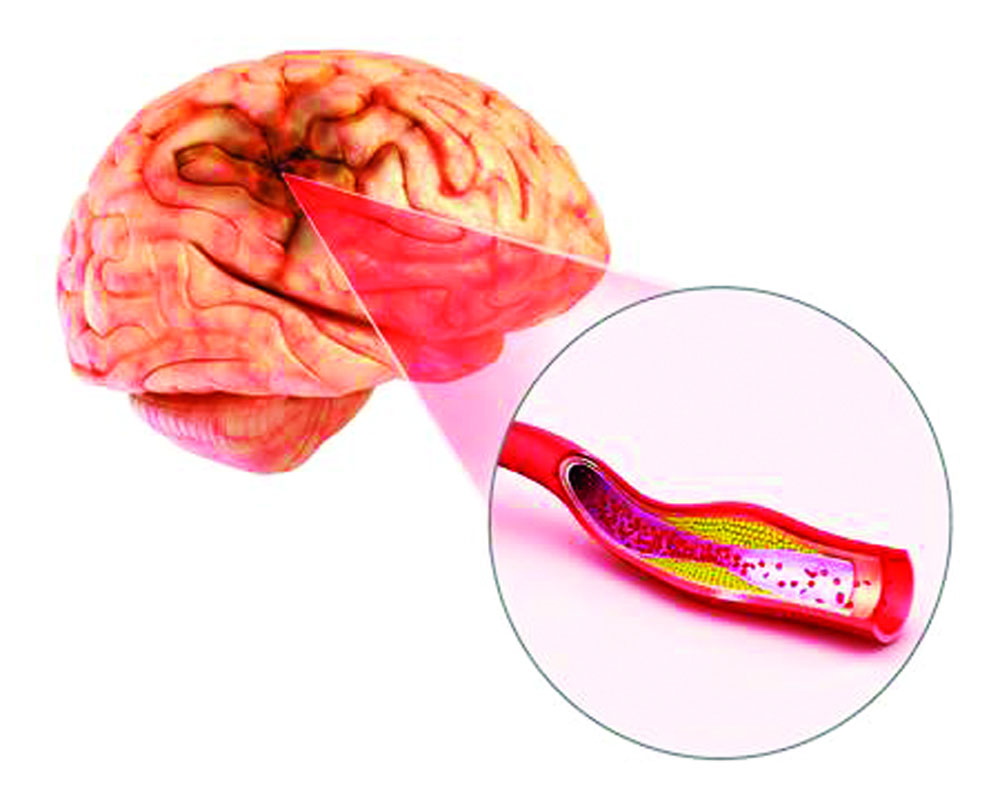To mark the World Stroke Day observed on October 29, experts emphasise on the key issues related to it and the needs of stroke survivors and caregivers. Pioneer Health reports
What is stroke?
Stroke or brain attack is potentially life-threatening in which a part of the brain is deprived of adequate oxygen and energy. Stroke may be ischemic due to clotting in artery of brain that results in the brain damage, or it may be haemorrhagic due to tear in the wall of artery that results in bleeding in the brain. Nearly 80 per cent of all strokes are ischemic.
— Dr KM Hassan, Associate Director & Head, Department of Neurology,
Jaypee Hospital, Noida
How to Recognise?
Warming signs
- Sudden weakness or numbness of face, arm or leg on one side of body
- Sudden loss of vision— particularly in one eye
- Sudden loss of speech or trouble talking or understanding speech
- Sudden severe headaches
- Sudden confusion
- Sudden dizziness, unsteadiness or falls
The pneumonic — BEFAST — can help people to remember the symptoms:
B: Balance loss
E: vision loss in one or both Eyes
F: fascial tilt
A: Arm drift
S: Speech slurring or loss
F: time to act Fast.
People must be aware of these symptoms and caregivers need to be extra careful in recognising these.
—Dr Vinit Suri, senior consultant, neurology, Indraprastha Apollo Hospitals and President, Indian Stroke Association
Factfile
Stroke is the third commonest cause of death worldwide and there is an increase in the number of stroke patients with disabilities every day. India and China contribute to 40 per cent of world’s stroke patients. Increased prevalence of diabetes, high blood pressure, heart problems are directly contributing to the increased stroke prevalence.
Diet which is high in carbohydrates and fats add to the risk. There is a pandemic of obesity in our country along with sleep apnea, which adds to the risk of stroke. It’s unfortunate to note that 20 per cent of stroke patients are less than 40 years of age. Stroke in young patients cause significant morbidity and has a huge impact economically as well in the family. This year, world stroke day 2018 is celebrated with the theme of “#up again after stroke” to reinstate hope among stroke survivors
Every minute after stroke 1.9 million brain cells (neurons) die and 84km of nerve fibers get permanently damaged.
— Dr Suryanarayana Sharma, consultant, neurologist & stroke specialist, head – division of Stroke & Neurosonology, BGS Gleneagles Global Hospitals
Nine preventive strategies
The nine preventive strategies for stroke include control of blood pressure, control of diabetes, controlling cholesterol levels, regular exercise, stopping smoking and tobacco chewing, reduction of body weight, appropriate diet modification, avoiding alcohol or drinking in moderation and controlling cardiac disease especially atrial fibrillation.
—Dr Suri
Treatable risk factors
- High blood pressure: Increases the risk two fold. This is because it can narrow the blood vessels causing them to rupture or leak. It can also result in the formation of blood clots which further increase the risk of stroke.
- Smoking: It is known to cause stroke as it leads to increased blood pressure which can cause the blood to clot and additionally builds up fatty substance in the main artery which provides blood to the brain.
- Diabetes: Doubles the risk. High blood sugar in the blood can damage blood vessels making them harder, narrower and more likely to be blocked.
- High Levels of cholesterol: Low-density lipoprotein cholesterol carries cholesterol through the blood which causes blockage. The build of plaque in the arteries makes it difficult for the blood to carry the oxygen to the brain.
— Dr Rajesh Garg, director and HOD, Neurology, Fortis Hospital, Shalimar Bagh
Treatment
Up to 85 per cent of all strokes are ischemic. For this, there is an option of intravenous medication called TPA (recombinant tissue plasminogen activator) available which can be given to the patient within first 3 to 4.5 hours of the symptom onset. The patients who have a blockage in a large blood vessel can be offered mechanical thrombectomy or ‘clot buster’ drug up to 24 hours, but sooner the better), which involves removing the blockage in the blood vessel and restoring the blood supply. This procedure is done through a small nick in the groin. Trials have shown that patients do well post mechanical thrombectomy and have a greater chance to live independently.
— Dr Chandril Chugh, senior consultant & head – Interventional Neurology, Max Super Speciality Hospital, Saket
Understanding the golden hour
It is imperative for a stroke patient to get to the hospital in the ‘Golden Period’, that is within first 4.5 hours (the sooner the better). This is because clot busting medication will be effective if administered within 4.5 hours. For every minute in which the blood flow is not restored, nearly two million additional nerve cells die.It is important that patient should reach an equipped stroke centre as early as possible.
— Dr Garg
Caring for a stroke patient at home
- A patient may undergo behavioural problems like depression. It is important to ensure that they feel supported. Making them a part of a support group is one way to enable them to handle their emotions.
- Motor-skill exercises can help improve their muscle strength.
- Forced - use therapy: An unaffected limb is restrained while they practice moving the affected limb to help improve its function.
- Range-of-motion therapy: Certain exercises and treatments can ease muscle tension and help them regain range of motion.
- Functional electrical stimulation: Electricity is applied to weakened muscles, causing them to contract and may help re-educate muscles.
- Robotic devices can assist impaired limbs with performing repetitive motions, helping the limbs to regain strength and function
- Virtual reality: The use of video games and other computer-based therapies involves interacting with a simulated, real-time environment
- Therapy for cognitive disorders: Occupational therapy and speech therapy can help them with lost cognitive abilities, such as memory, processing, problem-solving, social skills, judgment and safety awareness
- Therapy for communication disorders: Speech therapy can help them regain lost abilities in speaking, listening and writing.
- Treatments such as massage, herbal therapy, acupuncture and oxygen therapy are being evaluated
—Dr Garg

























